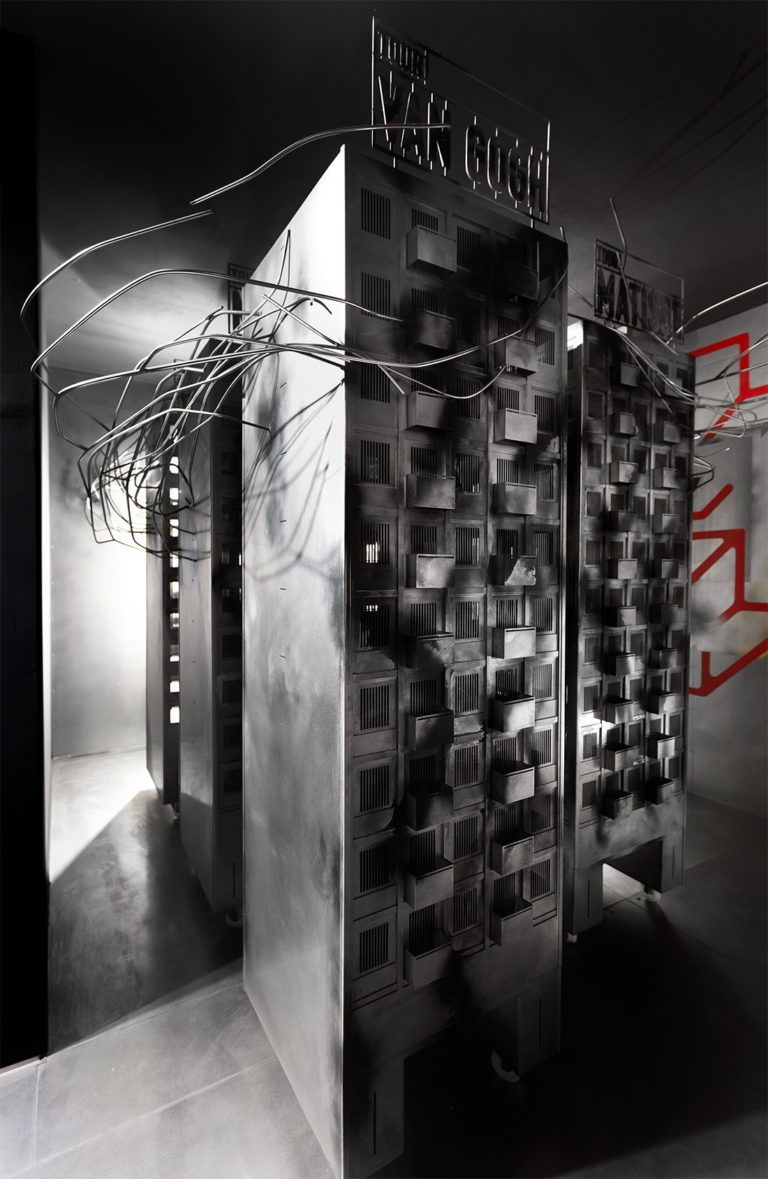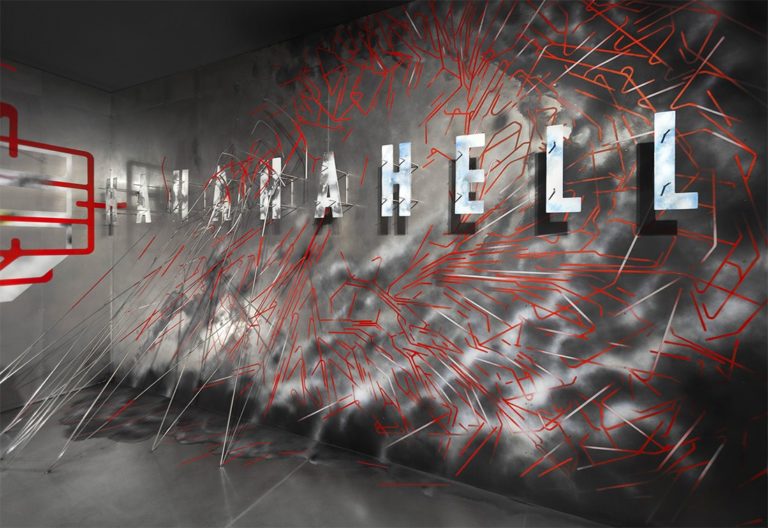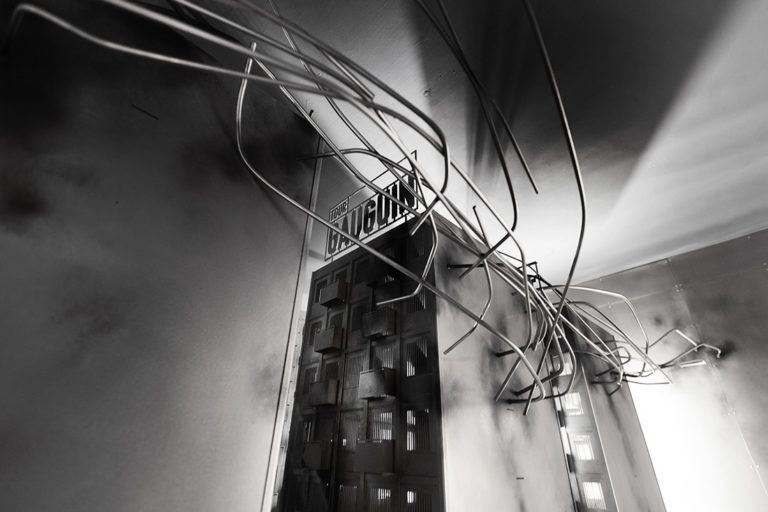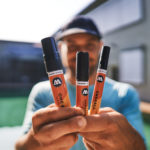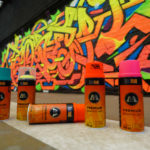Here is a great new piece of art by LOKISS from Paris, France! A 328 x 660 x 550 cm sized installation work painted with MOLOTOW URBAN FINE ART Spray Paint on steel. As part of an ongoing self-reflection, with a lot of questions and only a few answers. Read what he has to say about the work and check out the photos and 2 videos below!
“As the world changes constantly, each alert is piled up on my desk like so many new questions. You know well. The artist is a witness. He is not there to seduce and lie. He challenges and through his work, endangers the one who penetrates it. It is a commonplace that it is never useless to remember as the street has given itself up again to ornaments and to an orgy just as decorative as it seems to me obsolete. These same patterns on which I had learned badly to paint and make love …I never believed in artistic engagement off the street. Of course, to prefer to sing the revolt to an amorous refrain is to commit oneself. But the planetary danger is such, that the implication of the artist seems to me to be much more powerful and whole. Because to sing is to dance and forget yourself. And on what tempo? That of the tsunamis and the earth creaking under a murderous sun?
“Doxa” is one of my answer hypotheses, and it´s never gonna be the only one. In my eyes the word “Doxa” desperates effort to maintain an ideology in confusion. I hear a soft thought, very undemanding that leads to survival by denial. Or even the status quo … My bias is to take it at its own game. To confront it with its own cynicism, to corner it into one of those monstrous architectures where opposites give themselves the face of order and diktat. . And incidentally great culture. The interpretation you give of this piece will be the right one because they belong to you first. One and the other. Keep in mind, however, that I love chasms and their mysteries. That I am deeply mystical without being religious. And as a child, already, I was playing to lose myself. While feeling fear in the face of the unknown. Loss of self. Nothing could stop me. I always went deeper.
Only. When I started writing more than 40 years ago, the chasms had become vacant lots. These vast areas where the buildings, which were obsolete, turned into ruins. And in terrible children’s playgrounds. A dozen “minor painters” revived the industrial heart. Or were they polluting it in return? Didn’t they vandalize it in order to better transform it and that until erasure? The topology of “Doxa” plays on the same issues without any clear rule except that of adhering as closely as possible to the reflection that I described to you in the introduction. I could have used so-called natural elements to confront the disaster. But placing myself within the architectural and technological doxa, on the absurd model of a public garden planted in the center of the toxic city, I played with this conflict of geographies and materials. Steel or concrete founds the city. Not the branches of a tree. Buildings. Vertical prisons. Containment cells. Columns of computer servers. You will see them as you wish. These overprotected façades must resonate like urban volcanoes. Close to the explosion. It’s the weed that takes control of the dirty city. And opposite, there is the red machine which decomposes. Each line of the plan dissolves. Some laugh but flee. When others see hell. Our hell. Where the sky will be increasingly devastating blue.”





